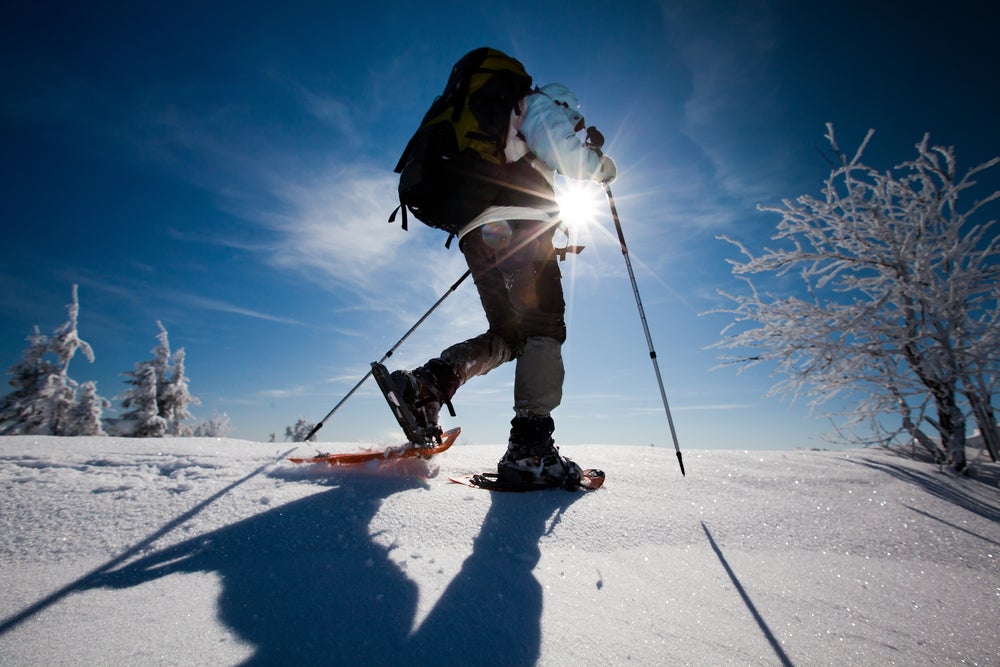Cross-Train Your Way Through Winter

Photo: <a href="http://www.shutterstock.com">www.shutterstock.com</a>
Learn other training options when the weather makes it difficult to swim, bike, or run.
Go ahead and admit it — sometimes swimming, biking and running get a tad boring. Add to this boredom some freezing weather and you’re likely to stumble into some serious training roadblocks. Why not use the colder weather to the advantage of your fitness while busting out of the swim/bike/run rut? Here are a few cold-weather and indoor training ideas that will keep you toned, fit and ready to kick some serious butt in that first spring race of the year.
Snowshoeing
Snowshoeing is one of the simplest winter sports out there. It’s perfect if you live in a winter climate but you want to avoid such bone-breaking activities as skiing and snowboarding that might halt your winter triathlon training completely. If you know how to walk, you can learn how to snowshoe. A 135-pound woman can burn up to 400 calories an hour snowshoeing while strengthening the same muscles used in running: calves, hamstrings, glutes, hip flexors and abs.
If you use the snowshoes with ski poles (which help with balance and rhythm), you get the added benefit of upper-body strengthening. Snowshoes and poles will run you roughly $250, but you can also rent them for the day or the week at many large ski resorts. Look for long, flat and gradually climbing cross-country skiing trails and incorporate some intervals of easy walking and jogging in the snowshoes for an extra cardiovascular benefit.
RELATED: What Cross-Training Activities Are Most Beneficial?
Cross-Country Skiing
Have you ever watched the Olympic cross-country skiing races? Those athletes are seriously strong from head to toe, which makes sense considering cross-country skiing uses almost every major muscle in the body from the thighs and glutes to the back and abs. Cross-country skiing is an ideal cross-training activity for both running and biking, and is low-impact, highly aerobic and affordable (the average cost of rented equipment and a trail pass is $35 a day). The learning curve of cross-country skiing is initially steep, so it is recommended that you take a lesson in order to ensure you have the correct form before heading out on the trails.
Rock Climbing
Rock climbing presents a unique combination of physical and mental challenge, and it’s a great way to stay in shape no matter the season. If you are new to the sport, head to an indoor climbing gym to get a lesson in proper climbing, bouldering and belay techniques. Rock climbing involves intense isometric muscle contraction, especially in the legs, abs, back and arms. This strength will be especially noticeable in the pool, where strong back and shoulder muscles translate to faster movement through the water.
If you are the daring type and live in a cold-weather climate, go outdoors for ice climbing, where instead of using your feet and hands to scale a wall, you use ice axes and crampons to literally kick and pull your way up a vertical wall of ice. Climbing equipment is somewhat expensive, so unless you plan on hitting the rock several times a week, you can easily rent your equipment for the day at REI or at an indoor climbing gym.
RELATED: Improve Your Run In Between Seasons
Follow Triathlete on Twitter @Triathletemag for inspiration, new workout ideas, gear reviews from our editors and more.